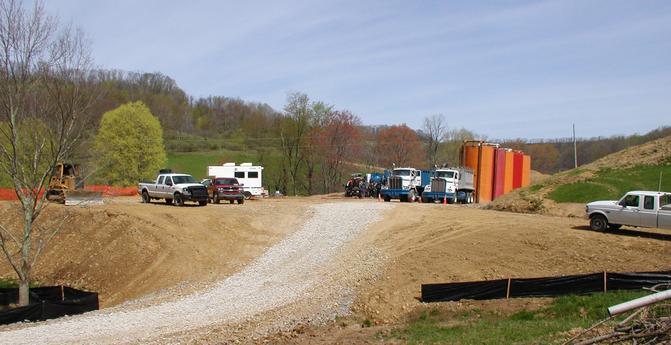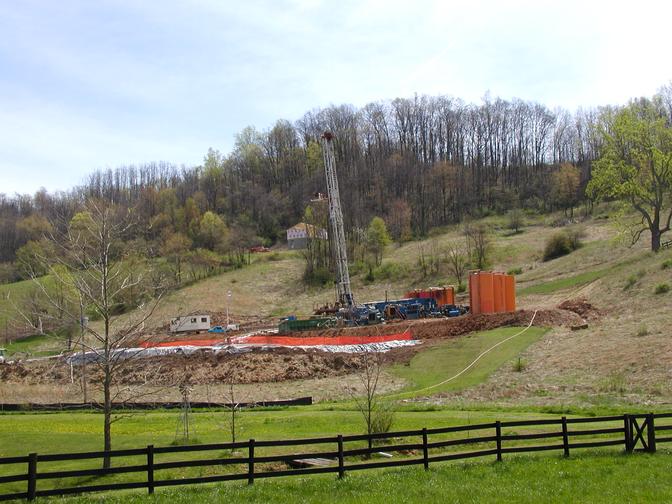
| Next Chapter | Previous Chapter | |
| Chapter 49: CLANRO, Inc. IV, The Decline | Contents | Chapter 47: CLANRO, Inc. II, The Ideals |
CLANRO got off to a fast start, with regular meetings and much public interest. Its officers were on TV several times, once debating a lawyer brought up from Midland, Texas who maintained payments were fair and the oil and gas industry took great care of the environment. The board of directors was invited to the office of Consolidated where we sat down with the officers. The President of the company started the meeting by asking, “What do you want?” When we discussed the meeting afterwards each member’s interpretation of this question was a sort of ink blot test for the member’s personality. Paige was the most worldly of the group, and he was sure it was an offer to bribe us individually. Knowing the company, it may well have been, or at least sounding out to see if it could be done. Accepting a bribe would have exposed us as adventurers, and ruined our reputations and the effect of CLANRO if it had been exposed by Consolidated, of course.
In the meeting, it was taken as a request for demands concerning the method of operation of the company. Some of the suggestions were that Consolidated should pay 1/8 royalty, damages should be determined by a committee including people outside Consolidated’s sphere of influence, and the public should have access to geological information. On the other hand, we said we could work with them to get legislation to get rid of their problem of highly fractured ownership, etc. Nothing came to pass as a result of the meeting.
People heard of CLANRO in Pennsylvania and Ohio, and “Chapters,” completely independent of the “Mother Chapter” were formed in both states. At first there were several articles in the Clarksburg paper. The owner, Cecil Highland, had close ties to Consolidated, and made it as difficult as possible for us, eventually refusing to print notices of our meeting. The Clarksburg papers were widely considered very poor newspapers, simply a device for making money for Highland. They carried little news about local goings on, just syndicated news. Later when I taught at Bridgeport, I learned he would not print anything about guns, except when they were used in crimes. Bridgeport police were angry with him because he wouldn’t announce the meetings of their gun club. The TV stations, particularly WBOY were more open and news oriented.
(Illustration 48-1)

Getting ready to drill. The site must be large enough for the drill, accessory equipment and parking for the crew .
Jack coached the Ohio and Pennsylvania Chapters with great pride. Al Engleke of Creston, WV brought news from that part of the state. Things were more difficult there, with a certain amount of violence, more or less open deceit by lawyers and at least one fatality related to oil and gas drilling. The sheriff who investigated the murder was not able to find the person who did it, although the entire community knew which small drilling company was responsible. Most of the problem was economic, and it was pervasive. Most landowners had low socioeconomic status, and the entire legal establishment did not think they were entitled to much for their oil and gas rights or damages. In contrast, Judge Maxwell, whose splendid mansion stands across from the Post Office in Clarksburg, received free gas in the city for wells on his Sycamore farm, but few, if any one else, could get free gas off the lease where the well was drilled. In later years descendants of the original lessors who “severed” the oil and gas rights leased without regard for the owners of the surface, and the company drilling the wells simply took the difference that once went into “free gas.” In fact the present lessors probably know nothing about the
(Illustration 48-2)

Drilling. This particular site is a few hundred feet from four houses. The landowner’s house is just out of the picture to the lower left, a second party’s is off to the middle left, a new house is being built in the view beyond the site and the fourth is out of the picture to the right.
business, and think royalty is “manna from heaven.” I once talked to the royalty owner on this farm, Dr. Howell’s heir, and she could not figure out which farm he had owned I was talking about.
One of the strangest things that happened to CLANRO was the interest taken in it by a professional killer. A family that lived near Bridgeport knew a man who lived in Florida who made his living by killing people for hire. They told him the reasons why CLANRO came into existence, what they were trying to accomplish, and the man became interested in it. He offered to fly up, shoot whoever we wanted “for practice,” and return home. Jack told me, Paige and Bob. I don’t think it was mentioned to anyone else. It “scared us to death,” as the saying goes. Jack sent word back, “Thanks but no thanks.” The family continued to support CLANRO, and we accepted their help in other ways. We saw ourselves as political and economic, primarily economic, with no place for blood lust.
Meetings were held in many communities to generate interest. The “Holy Grail” and one of the most important interest generating ideas CLANRO developed was a “suit to break the old leases.” Originally the idea was to restore oil and gas drilling rights to surface owners. I think Paige was the most interested in this idea, perhaps had originated it. He used the word “unconscionable” to describe the condition where people who were second and third generation descendants of former land owners who leased the oil and gas were still paid the royalty. It represented the siphoning off of the easiest money from the land to someone who no longer had any interest in it, simply by a legal sophistication. Later the term “suit to break the old leases” came to describe any attempt to decrease provisions of leases working against the interest of current land owners. Today, of course, the legislature has allowed the surface owner to lease the “deep gas” below a certain depth, except “experimental wells,” and a somewhat confused situation exists.
Aside The Weston Independent, a weekly newspaper mentioned above, opposed the Stonewall Jackson Dam when it was being debated in public, while the Democrat was for it. CLANRO was opposed to the dam, and took a strong public stand against it. The Gannett chain of newspapers, owned at that time by the Rockefellers, bought out the Independent, and closed it. It was no secret that Jay Rockefeller, who was in West Virginia politics by that time, was for the dam.
Slightly before this time the international oil companies had manipulated an attempt by OPEC, the organization of oil producing nations, to raise prices on oil products. In effect, the companies had paid more for their oil, but had raised the price for the products made from the oil much more than enough to cover the increase in oil prices. The result was a huge pile of money that the companies would have to pay tax on if they did not find some gambit to avoid the tax. Carter Oil, an affiliate of Exxon, came into the counties south of us and bought huge coal reserves by a scheme which made it possible to avoid letting each seller know what others had been paid. The longer you held out the more you got. The scheme was too complicated to explain here.
One of the oil company buyers explained to CLANRO how this was being done, and I put an article in the CLANRO Beacon, the newsletter, on their scheme, but it was too late and too far away to do much good for the landowners of Braxton and surrounding counties.
Another of the buyers came to CLANRO and explained that Exxon, in which the Rockefellers had a considerable interest, knew that the Sewell Coal, a very deep formation of very high quality coal extended under the Stonewall Jackson Dam area. The government project in effect did the leg work in “putting together” the coal, that is buying it and putting it into one block. Sometime in the future, when it is needed, the government can let a coal or energy company have it. The Corps of Engineers acted as though the considerable low-grade coal reserves near the surface in the area were of no value. It was easy to calculate the approximate tonnage from West Virginia Geological Survey maps and data. CLANRO did that, but it was ignored.
| Next Chapter | Previous Chapter | |
| Chapter 49: CLANRO, Inc. IV, The Decline | Contents | Chapter 47: CLANRO, Inc. II, The Ideals |
Copyright © 1998, 2006, 2008, 2011 S. Tom Bond (stombond at hughes.net)